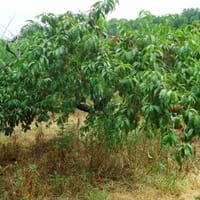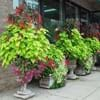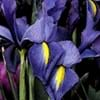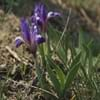Life Span
Perennial
Perennial
Type
Bulb or Corm or Tuber
Fruit
Origin
Mediterranean, Western Asia
China
Types
Not Available
Freestone, Clingstone
Number of Varieties
Not Available
Habitat
Mediterranean region
Temperate Regions, Warmer regions
USDA Hardiness Zone
4-9
5-9
Sunset Zone
21,22
Not Available
Habit
Clump-Forming
Upright/Erect
Flower Color
White, Yellow, Red, Blue, Purple, Pink, Lavender, Violet
Pink
Flower Color Modifier
Bicolor
Bicolor
Fruit Color
Not Available
Yellow, Red, Pink, Peach
Leaf Color in Spring
Green
Green
Leaf Color in Summer
Light Green
Green
Leaf Color in Fall
Several shades of Green
Green
Leaf Color in Winter
Light Green
Light Green
Leaf Shape
Long slender
Elliptic
Plant Season
Spring, Winter
Spring, Summer, Fall
Sunlight
Full Sun, Partial Sun
Full Sun
Growth Rate
Medium
Medium
Type of Soil
Loam
Loam, Sand
The pH of Soil
Acidic, Neutral
Acidic, Neutral, Alkaline
Soil Drainage
Well drained
Well drained
Bloom Time
Early Spring, Spring, Late Winter, Indeterminate
Spring
Tolerances
Black Walnut Toxicity, Rabbit, Shade areas
Drought
Where to Plant?
Container, Ground, Pot
Container, Ground, Pot
How to Plant?
chipping, Offsets, scooping, Twin scaling, Vegetative
Grafting
Plant Maintenance
Low
Medium
Watering Requirements
Medium
Requires regular watering, Requires watering in the growing season
In Summer
Lots of watering
Lots of watering
In Spring
Moderate
Moderate
In Winter
Average Water
Average Water
Soil pH
Acidic, Neutral
Acidic, Neutral, Alkaline
Soil Type
Loam
Loam, Sand
Soil Drainage Capacity
Well drained
Well drained
Sun Exposure
Full Sun, Partial Sun
Full Sun
Pruning
Remove damaged leaves, Remove dead branches, Remove dead leaves
Prune every year, Prune to stimulate growth, Remove damaged leaves, Remove dead branches, Remove dead leaves, Remove hanging branches
Fertilizers
All-Purpose Liquid Fertilizer, General garden fertilizer, Time release fertilizer
Compost, fertilize in spring, fertilize in summer, Nitrogen, Phosphorous
Pests and Diseases
Pests and diseases free
Bacterial Canker, Bacterial leaf spot, Crown gall, Leaf curl, Red blotch, Rust, Scab
Plant Tolerance
Black Walnut Toxicity, Rabbit, Shade areas
Drought
Flower Petal Number
Single, Double, Semi-Double
Single
Foliage Texture
Medium
Medium
Foliage Sheen
Glossy
Glossy
Allergy
Asthma
Avoid during Pregnancy
Aesthetic Uses
Beautification, Bouquets, Cottage Garden, Landscape Designing, Showy Purposes
Not Used For Aesthetic Purpose
Beauty Benefits
Not Available
Good for skin and hair
Environmental Uses
Not Available
Air purification, Food for animals, Food for birds, Food for insects, Nesting sites for birds, Prevent Soil Erosion
Medicinal Uses
Not Available
Cancer, Diabetes, Heart problems, Nutrients, Skin Disorders
Part of Plant Used
Flowers
Fruits
Other Uses
Decoration Purposes, Showy Purposes
Cosmetics, Used As Food, Used for its medicinal properties
Used As Indoor Plant
Yes
No
Used As Outdoor Plant
Yes
Yes
Garden Design
Bedding Plant, Container, Cutflower, Mixed Border, Rock Garden / Wall
Fruit / Fruit Tree
Botanical Name
Hyacinthus orientalis
PRUNUS persica 'Saturn'
Common Name
Hyacinth, common hyacinth, garden hyacinth, dutch hyacinth
Donut Peach, Peach, Saturn Peach, Yellow Freestone Peach
In Hindi
ह्यचीन्थ
डोनट पीच
In German
Hyazinthe
Donut Pfirsich
In French
jacinthe
Donut Peach
In Spanish
jacinto
Donut Peach
In Greek
υάκινθος
ντόνατ Ροδάκινο
In Portuguese
jacinto
Donut Peach
In Polish
hiacynt
Donut Peach
In Latin
et hyacinthinas,
Donut Peach
Phylum
Magnoliophyta
Magnoliophyta
Class
Liliopsida
Magnoliopsida
Family
Liliaceae
Rosaceae
Clade
Angiosperms, Monocots
Angiosperms, Eudicots, Rosids
Tribe
Not Available
Not Available
Subfamily
Scilloideae
Cetoniinae
Number of Species
Not Available
Season and Care of Hyacinth and Donut Peach
Season and care of Hyacinth and Donut Peach is important to know. While considering everything about Hyacinth and Donut Peach Care, growing season is an essential factor. Hyacinth season is Spring and Winter and Donut Peach season is Spring and Winter. The type of soil for Hyacinth is Loam and for Donut Peach is Loam, Sand while the PH of soil for Hyacinth is Acidic, Neutral and for Donut Peach is Acidic, Neutral, Alkaline.
Hyacinth and Donut Peach Physical Information
Hyacinth and Donut Peach physical information is very important for comparison. Hyacinth height is 10.20 cm and width 5.10 cm whereas Donut Peach height is 370.00 cm and width 370.00 cm. The color specification of Hyacinth and Donut Peach are as follows:
Hyacinth flower color: White, Yellow, Red, Blue, Purple, Pink, Lavender and Violet
Hyacinth leaf color: Green
Donut Peach flower color: Pink
- Donut Peach leaf color: Green
Care of Hyacinth and Donut Peach
Care of Hyacinth and Donut Peach include pruning, fertilizers, watering etc. Hyacinth pruning is done Remove damaged leaves, Remove dead branches and Remove dead leaves and Donut Peach pruning is done Prune every year, Prune to stimulate growth, Remove damaged leaves, Remove dead branches, Remove dead leaves and Remove hanging branches. In summer Hyacinth needs Lots of watering and in winter, it needs Average Water. Whereas, in summer Donut Peach needs Lots of watering and in winter, it needs Average Water.





